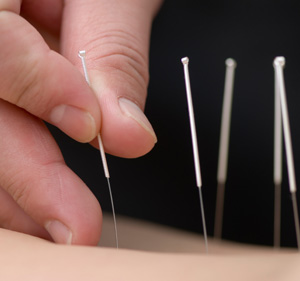The treatment recommended for whiplash injury varies widely among health care practitioners. Perhaps partly as a result of a relatively large body of existing junk science literature, there are many who believe that whiplash injuries do not occur or that they do not benefit from any type of treatment. In emergency rooms around the country, common advice is to go home, apply an ice pack, take antiinflammatory medication, and to consult with the family doctor if symptoms persist beyond two weeks. Unfortunately, this advice is probably responsible for at least some of the more than 30% of whiplash victims who never fully recover or the 10% or more who become disabled. Rational therapeutic intervention during that initial two weeks can greatly reduce the likelihood of long-term symptoms. However, while there have been a small number of studies which have looked at the question of which treatment is best, most have been plagued with design errors which have made interpretation difficult at best, and none have had any success in measuring honest differences in treatment types. Our purpose here, therefore, is simply to describe the various types of care offered to whiplash victims. As is usually the case in medicine, not all patients will respond the same to a particular treatment approach. Chiropractic: 
The primary tool of modern chiropractors is spinal manipulation, or in the parlance of the profession, spinal adjusting. Chiropractors also utilize a variety of physical medicine and rehabilitation approaches, along with nutritional advice to strengthen and balance the body. They may utilize traditional modalities, such as ultrasound, diathermy, microcurrent stimulation, laser therapy, traction and head and cold applications in addition to spinal manipulation. As mentioned, there are few studies of the efficacy of the various treatment approaches to acute whiplash, but there are two studies in which the effectiveness of chiropractic care for chronic whiplash injury has been demonstrated. In the study of late whiplash it was reported that chiropractic care was effective in 93% of cases. In a subsequent study, the authors classified the 93 late whiplash patients into three groups: Group 1, with 50 patients, was roughly the equivalent to grade 2 CAD by definition; Group 2, with 32 patients, was roughly equivalent to grade 3 CAD; Group 3, described as having an unusual complex of symptoms that included blackouts, visual disturbance, nausea, vomiting, chest pain, and non-dermatomal pain distributions, did not really conform to any of the CAD grades. Following treatment, improvement was noted in 72% of the patients in Group 1, 94% of the patients in Group 2, and 27% of Group 3, with one patient made worse. Most practitioners would concede that managing late whiplash patients is a more challenging than managing acute cases. Acupuncture 
Traditional needle acupuncture is often helpful in relieving the pain of an acute cervical spine injury such as whiplash. It has also been shown to be of benefit for chronic neck pain. Readers are referred elsewhere for more information about this ancient healing practice. Acupuncturists generally have a four-year undergraduate degree and a four-year degree in Oriental Medicine, although variations exist. Medicine  There are many different medical specialties, but the specialties most likely to treat whiplash are general or family practice, orthopaedics, neurology, and physical medicine and rehabilitation, with the latter usually having the most to offer these patients. Beyond pain management, medical practitioners may refer patients for a number of sessions of physical therapy, which might include exercises, stretching, deep tissue massage or mobilization, and many of the modalities listed in the preceding paragraph. There are many different medical specialties, but the specialties most likely to treat whiplash are general or family practice, orthopaedics, neurology, and physical medicine and rehabilitation, with the latter usually having the most to offer these patients. Beyond pain management, medical practitioners may refer patients for a number of sessions of physical therapy, which might include exercises, stretching, deep tissue massage or mobilization, and many of the modalities listed in the preceding paragraph.
Physical medicine and rehabilitation specialists are often called upon to provide special fluoroscopic-guided injections into the epidural space, to provide diagnostic anesthetic blocks, or to provide radiofrequency ablation of the nerves innervating the facet joints. Medical doctors usually have a four-year undergraduate degree and a four-year medical degree, and many have also completed diplomate programs (residencies) in the various specialties. Registered physical therapists (RPT) are not physicians and are generally not licensed to provide spinal manipulation. They usually have a four-year undergraduate degree in physical therapy, although there are graduate programs available as well. One survey study provides some food for thought when it comes to selecting a practitioner. A significant number of medical specialists who frequently treat or examine whiplash patients (nearly half of the surveyed orthopaedic surgeons) endorsed the belief that long-term pain and suffering is more the result of secondary gain, psychiatric disorders, or socioeconomic stress. While there are such cases, there is no basis for believing this is the norm. Yet attitudes such as these would seem to undermine or even prevent the rendering of effective care. Patients should always feel confident that their physicians have their best interests at heart. Surgery is not commonly required for whiplash patients, but may be in instances where disc herniations occur and cannot be managed conservatively or when ligamentous instability requires spinal fusion. When indicated, surgery will be provided by either an orthopaedic surgeon or a neurosurgeon. Note that some surgeons specialize in specific areas of surgery. For example, some orthopaedic surgeons do not operate on spines at all. Others may specialize in cervical spine procedures. Multidisciplinary centers Pain treatment centers are examples of multidisciplinary centers, and usually employ a variety of practitioner types and therapists. This might include neurologists, physiatrists, chiropractors, physical therapists, orthopaedic surgeons, exercise physiologists, and psychologists or psychiatrists. Several studies have been published to recommend such centers, although it is important to watch runaway costs when more consults or treatment than might be necessary are provided. Similar working relationships and provider networks can exist less formally in which the primary treating provider manages care by referring to the appropriate specialists around town when necessary and appropriate. In many cases the primary treating practitioner might be a chiropractor or a family practitioner. A recent comparison of medicine, acupuncture, and chiropractic care: Comparing, in a randomized trial, medication (Celebrex, Vioxx, or paracetamol) to acupuncture and spinal manipulation over the course of 9 weeks in persons with chronic spinal pain (neck to low back pain included), the authors demonstrated a rather profound superiority in chiropractic spinal manipulation. The exception was for neck pain in which acupuncture was found to be superior on the basis of Neck Disability Scores. The average period of chronicity was 4.5 years in the medicine group; 6.4 years in the acupuncture group; and 8.3 years in the chiropractic group. After 9 weeks of care, spinal manipulation had achieved asymptomatic status in 27%, compared to 9.4% for acupuncture and only 5% for medicine. Patients were allowed to change therapy groups if they perceived a lack of effectiveness in their current treatment group. Over the course of the 9 weeks, nine from the medical group, five from the acupuncture group, and two from the chiropractic group changed treatment types. [For more in-depth information of this topic, see Foreman SM, Croft AC (eds): Whiplash Injuries: the Cervical Acceleration/Deceleration Syndrome, 3rd edition, Lippincott Williams & Wilkins, Baltimore, 2001. Other information is available from Whiplash in Hypertext 3.0, a software program available from the Spine Research Institute of San Diego.]
|